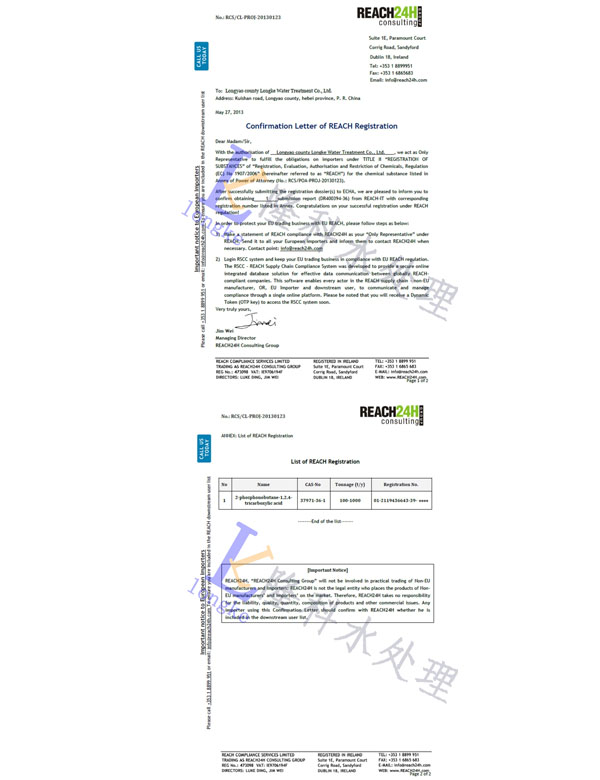polyacrylamide flocculant water treatment
The Role of Polyacrylamide Flocculant in Water Treatment
Water is one of the most vital resources on our planet, playing a crucial role in agriculture, industry, and daily life. However, the growing concern over water quality and availability due to pollution, industrial discharge, and population growth has necessitated the development of effective water treatment methods. Among the various chemical agents used for this purpose, polyacrylamide flocculants have become increasingly prominent due to their efficiency in treating wastewater and improving water clarity.
Polyacrylamide (PAM) is a synthetic polymer that is water-soluble and comes in various forms, including anionic, cationic, and non-ionic types. Each type has specific properties and functions, making PAM versatile for different applications. In the context of water treatment, PAM primarily acts as a flocculant, facilitating the aggregation of suspended particles into larger clumps, or flocs, which can then be easily removed from the water.
The process of flocculation involves the addition of polyacrylamide to contaminated water, where it interacts with the suspended solids. The cationic form of PAM, for instance, carries a positive charge, which allows it to neutralize the negative charges of suspended particles, aiding in their aggregation. This is particularly useful in treatment systems that deal with wastewater containing high levels of organic matter, colloidal particles, and bacteria. The resulting flocs can be separated from the liquid phase through sedimentation, flotation, or filtration, significantly improving the clarity and quality of the water.
One of the key advantages of using polyacrylamide in water treatment is its effectiveness at low concentrations. Only a small amount of PAM is required to achieve significant flocculation, making it a cost-effective solution. Additionally, PAM can be tailored for specific applications by varying its molecular weight and charge density. This customization allows water treatment facilities to optimize the dosage based on the unique characteristics of the wastewater they are processing, enhancing efficiency and reducing overall chemical usage.
polyacrylamide flocculant water treatment

The environmental impact of polyacrylamide flocculants is another essential consideration. Recent studies indicate that when used according to recommended guidelines, PAM poses minimal risk to the environment. Bioassays have shown that PAM is non-toxic to aquatic life, and many formulations are biodegradable, breaking down into harmless byproducts when treated correctly. However, it is crucial to apply-mtreatment methods to prevent excess PAM from entering natural water bodies, as high concentrations can lead to negative ecological effects.
In addition to its use in wastewater treatment, polyacrylamide flocculants have applications in a range of industries, including paper manufacturing, mining, and food processing. In these sectors, PAM aids in clarifying water and enhancing the separation processes of solids from liquids. As industries face increasing regulatory pressures to improve their environmental footprint, the demand for effective and sustainable water treatment solutions, such as PAM flocculants, is expected to grow.
Looking towards the future, ongoing research is focused on enhancing the performance of polyacrylamide flocculants and developing new formulations that are even more environmentally friendly. Innovations such as combining PAM with natural coagulants derived from plants or optimizing PAM for specific environmental conditions hold promise for more efficient and sustainable water treatment solutions.
In conclusion, polyacrylamide flocculants are an invaluable tool in modern water treatment processes. Their unique properties, coupled with low toxicity and environmental impact, make them suitable for addressing the challenges posed by water pollution and scarcity. As the quest for clean and safe water continues, polysacrylamide flocculants will undoubtedly play a pivotal role in ensuring a sustainable future for our precious water resources.
-
Pbtc Scale InhibitorPBTC: A Scale Protector for Industrial Water TreatmentNewsAug.05,2025
-
Organic Phosphonate: An Efficient Defender in the Field of Scale InhibitionNewsAug.05,2025
-
Hydrolyzed Polymaleic Anhydride: Green Pioneer in Scale Inhibition FieldNewsAug.05,2025
-
PAPEMP Polyamino Polyether Methylene Phosphonic Acid For SaleNewsAug.05,2025
-
Flocculant Water Treatment: A Pioneer in Purification in the Field of Water TreatmentNewsAug.05,2025
-
Benzyl Isothiazolinone: An Efficient and Broad-Spectrum Antibacterial Protective GuardNewsAug.05,2025





